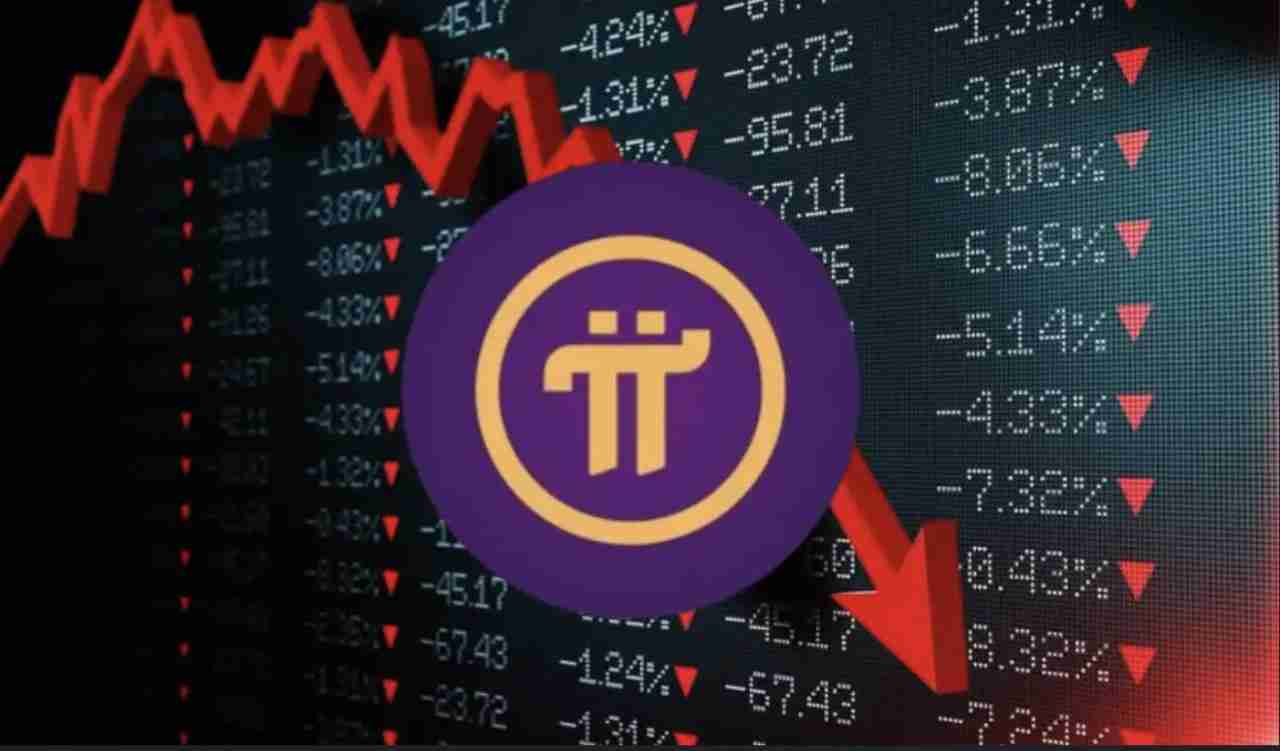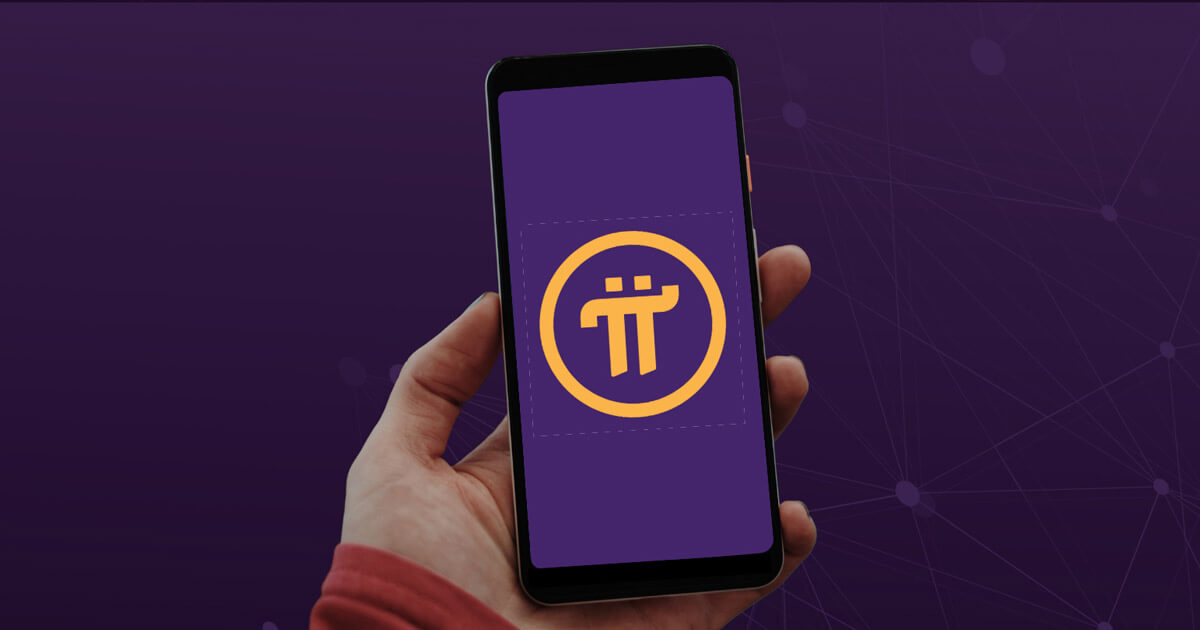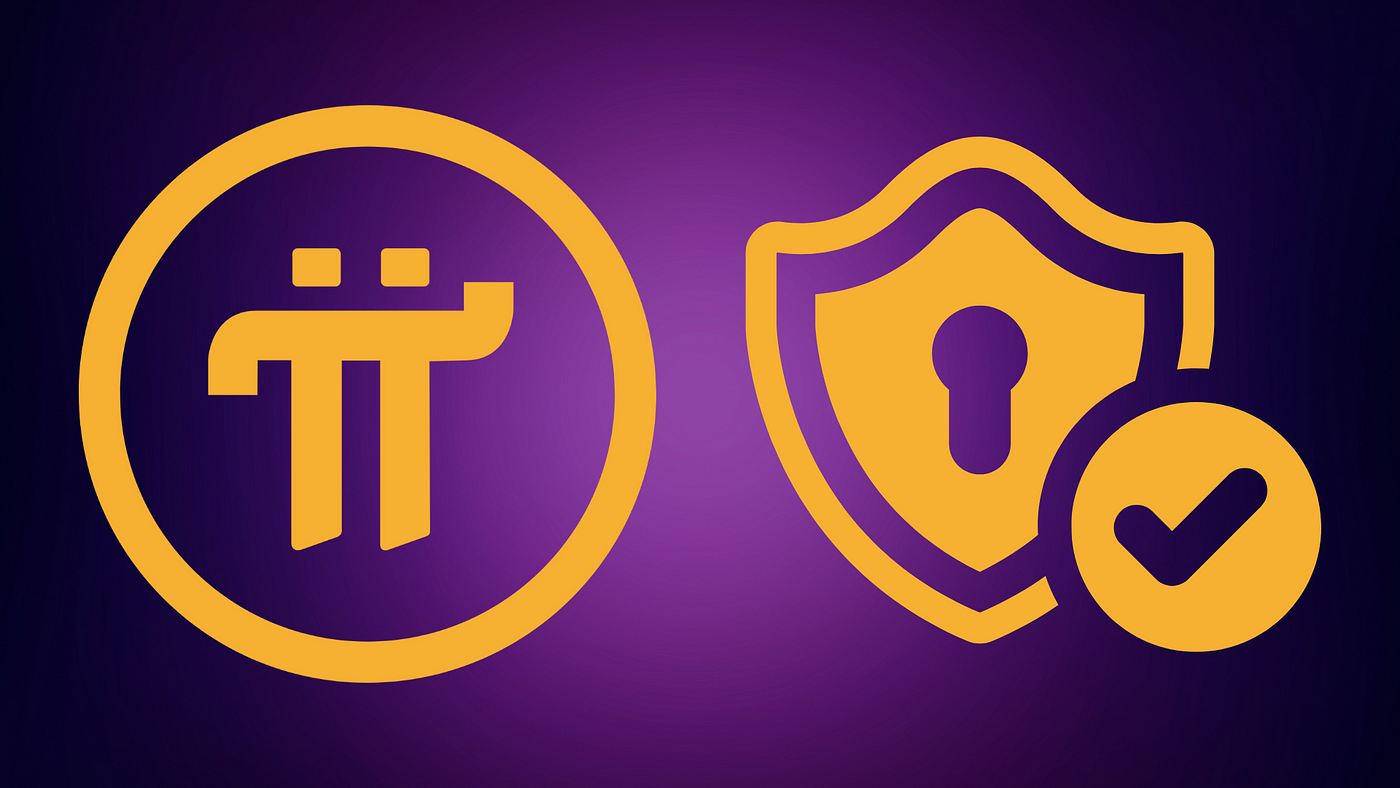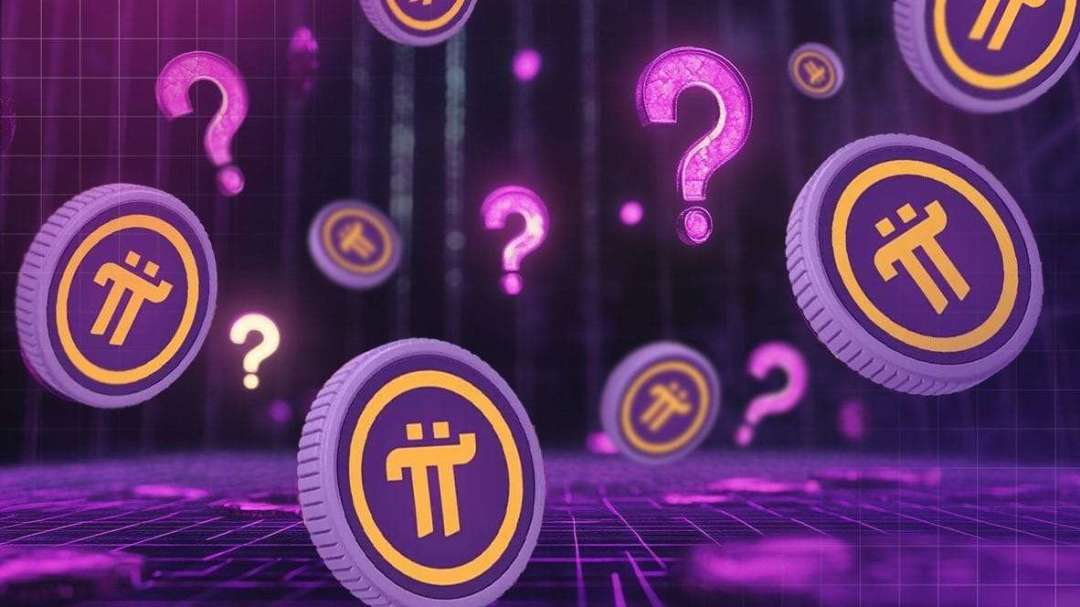I. Introduction: Pi Network's Unique Journey and Impending Crisis
Since its inception in 2019, Pi Network has rapidly amassed tens of millions of users worldwide with its innovative "mobile mining" model, claiming to build an inclusive, low-threshold cryptocurrency ecosystem. The project was initiated by a team of Stanford University Ph.D.s, aiming to solve the pain points of traditional cryptocurrencies (like Bitcoin) such as high mining barriers, significant energy consumption, and complex operations, enabling ordinary people to "mine" through smartphones and easily participate in the blockchain world. Its core vision is to achieve true "cryptocurrency popularization," allowing everyone to become a "miner" of digital assets.
Pi Network's mining mechanism is particularly unique: users do not need to purchase expensive mining rigs or consume large amounts of electricity; they simply need to tap the mobile app once a day to "mine" Pi coins. This "cost-free," "barrier-free" participation method quickly attracted a vast user base globally, especially in regions with relatively lower cryptocurrency adoption rates. Users were drawn by a grand vision of "future digital gold" and "cryptocurrency for everyone," becoming early builders within Pi Network's unique "walled garden." Unlike traditional crypto projects that launch on exchanges through ICO/IEO, Pi Network emphasizes building a user base and ecosystem first, before gradually opening the mainnet and facilitating value circulation, which makes it particularly distinctive in the crypto world.
However, beneath this seemingly prosperous surface, a series of severe Pi Network problems have become increasingly apparent. As the project progresses, a formidable Pi Network problem stemming from massive token unlocks is emerging. According to Coinpedia, a staggering over 620 million Pi tokens are set to unlock and enter circulation by December 2025, which will exert immense pressure on Pi Network's market stability and value. This supply surge has raised deep concerns in the market about price downturns and liquidity stress, signaling that Pi Network is approaching a critical juncture in its development—a severe test of its survival and value, and a final judgment on its unique "community-first, circulation-later" model.
II. The Unlock Tide: The Quantitative Impact Wave on Pi Network from Supply Surges
Pi Network's token unlock mechanism is gradually releasing the Pi coins "mined" by its vast user base. However, this release is not gradual; it is occurring in concentrated, massive bursts over a short period, creating a significant supply shock for the market.
1.The July "Flash Crash" as a Warning: A Preview of Future Shocks
We don't need to look far into the future; a recent event provides a clear indication. On July 15, 2025, Pi Networkunderwent a one-time, single-day unlock of up to 337 million Pi tokens. This massive supply release directly caused the price of Pi coin to plummet by 25% in a short period. This "flash crash" served as an alarm bell, clearly foreshadowing the direct and brutal impact that the upcoming larger-scale unlock waves will have on Pi Network's price and liquidity, especially in the absence of sufficient demand to absorb them. It not only tested the market's capacity to withstand sudden supply but also exposed the fragility of Pi Network's internal market mechanisms.
2.The 2025 Second-Half Unlock Calendar: Challenges Drawing Closer
The July shock was not the end but the beginning of a prolonged challenge. Coinpedia's data indicates that the unlock schedule for the second half of 2025 is even more striking:
-
August: An estimated 139 million Pi will unlock.
-
September: Closely followed by 116 million Pi.
-
October: Still, 93 million Pi will enter the market.
-
November: The unlock volume increases to 102 million Pi.
-
December: The unlock volume peaks at 170 million Pi.
Roughly calculated, over 620 million Pi tokens will be progressively unlocked from August to December. Such an enormous supply being released in just five months poses a tremendous test for any cryptocurrency, let alone for a Pi Network ecosystem that has not yet fully opened its circulation.
3.The Scrutiny of Economic Principles: The Fatal Threat of Supply-Demand Imbalance
In fundamental economic principles, when supply dramatically increases without a corresponding surge in demand, prices inevitably face downward pressure. For Pi Network, the unlock of hundreds of millions of tokens means that the tradable supply in the market will balloon.
-
Selling Pressure: Many early mining users might be eager to cash out their Pi, creating immense selling pressure. This pressure will quickly overwhelm existing small buy orders in the short term.
-
Liquidity Drying Up: Insufficient market depth to absorb such massive sell orders will lead to rapid price declines, and potentially even a liquidity crunch, where users cannot sell or can only sell at extremely low prices.
-
"Miner" Confidence Erosion: Continuous price declines will severely erode the confidence of Pi Network's vast "miner" community, potentially leading to user attrition and further weakening the ecosystem's activity and future potential demand.

III. Pi Network's Current State: Deep-Seated Problems and Ongoing Challenges
Despite its massive user base, Pi Network's current operational model and development status also present some core structural issues. These problems are further magnified as the unlock wave approaches, becoming obstacles that hinder its value discovery and long-term growth.
1.The Wounds of Decentralization: Is the Blockchain Ethos Absent?
The news states that Pi Network "lacks a decentralized mechanism," a fatal criticism for a project claiming to be based on blockchain technology.
-
Concerns over Centralized Control: True decentralized blockchains mean there is no single controlling party, all data is transparent and maintained collectively by the community. However, Pi Network's Core Team plays an absolutely dominant role in project management, technical decisions, and even KYC processes, raising widespread questions within the community about its degree of decentralization. This makes Pi Network appear more like a project operated by a centralized company than a true public chain.
-
Insufficient Censorship Resistance: Lack of decentralization implies potential censorship risks and single points of failure. If the Core Team encounters issues or faces external pressure, the entire Pi Network operation could be challenged.
-
Loss of Trust and Innovation: The core appeal of blockchain communities lies in their openness, transparency, and censorship resistance. Pi Network's shortcomings in decentralization will make it difficult to gain trust and recognition from the broader crypto community and may hinder external developers from innovating on its network.
2.The Dilemma of Ecosystem Building: Lack of Attractive Use Cases
Despite Pi Network's efforts, such as launching Pi App Studio to promote ecosystem development, the news indicates that the project "struggles to attract external attention."
-
Insufficient Developer Interest: The lack of true decentralization, unclear incentive mechanisms, and a closed mainnet environment have left external developers with little motivation to build innovative DApps on Pi Network. High-quality applications are key to attracting users and creating demand, which is currently a weakness for Pi Network.
-
User Activity and Stickiness: Most Pi Network users remain in the daily "tap-to-mine" behavior, lacking actual trading, application experience, and ecosystem interaction. This leads to insufficient user stickiness, and once mining expectations decline, there's a high risk of user attrition.
-
"Walled Garden" Limitations: Pi Network has long remained in its "enclosed mainnet" phase, meaning its tokens and applications cannot interoperate with the broader crypto ecosystem. This "walled garden" model severely restricts Pi Network's use cases, value discovery, and capital inflow. Users cannot freely transfer their Pi tokens to external chains for trading, lending, or participating in other DeFi activities, which keeps Pi coin's value confined to an internal loop.
3.Absence from Mainstream Exchanges: A Bottleneck for Value Discovery and Liquidity
Analysts emphasize that if Pi Network wishes to avoid long-term decline, it urgently needs to "achieve exchange listing as soon as possible." This is not an unfounded statement but one of its most critical current bottlenecks.
-
Lack of Real Price Discovery Mechanism: Without listings on mainstream exchanges, the price of Pi coin can only be determined through sporadic internal community trades or Over-The-Counter (OTC) markets. These markets often lack transparency, have poor liquidity, and are highly susceptible to manipulation, preventing the formation of a widely recognized price that reflects true market supply and demand.
-
Severe Lack of Liquidity: Exchanges are the primary source of cryptocurrency liquidity. Without the support of mainstream exchanges, users find it difficult to conveniently and quickly buy and sell their Pi coins, which is fatal for the upcoming massive unlocks. Insufficient liquidity amplifies the impact of price drops, leading to a further spiral downwards in token value.
-
Difficulty Attracting Institutional Investors: The absence from mainstream exchanges means institutional investors can hardly participate in Pi Network's trading, thus losing out on massive potential capital inflows.
IV. The Path to Survival: Key Strategies for Pi Network to Break Through

Facing the flood of unlocks and inherent structural challenges, Pi Network, if it wishes to avoid "long-term decline," must take decisive and substantive action. Analysts' recommendations cut to the core: drive decentralization, strengthen partnerships, and achieve exchange listing as soon as possible.
1.Accelerate Decentralization: Fulfilling Core Promises
This is crucial for Pi Network's survival. The Core Team needs to:
-
Progressively Open Core Code: Open-source more code, accept external developer contributions and security audits, increasing transparency.
-
Achieve True Community Governance: Gradually devolve major decision-making powers, such as protocol upgrades and fund usage, to node holders or community votes, rather than being solely controlled by the Core Team.
-
Strengthen the Node Network: Incentivize more independent nodes to run, ensuring the network's security and decentralized operation. This will enhance external trust in Pi Network's public chain attributes.
2.Deepen and Expand Partnerships: Building External Support
Relying solely on internal users is insufficient; Pi Network needs to actively introduce external forces:
-
Technical Collaborations: Partner with mature blockchain infrastructure providers, Layer 2 solutions, or cross-chain bridge projects to enhance Pi Network's technical capabilities and interoperability.
-
Application Adoption Partnerships: Collaborate with companies that have real business needs to promote the use of Pi coin in real-world scenarios, such as payments, e-commerce, or content distribution, thereby creating actual demand.
-
Brand and Public Relations Building: Actively engage with mainstream crypto media and analytical institutions to enhance Pi Network's transparency and credibility, changing its image in the crypto community from an "outsider" or "controversial project."
3.Expedite Open Mainnet and Mainstream Exchange Listings: The Only Way to External Markets
This is the ultimate solution for resolving Pi Network's liquidity dilemma and achieving value discovery.
-
Open Mainnet is a Prerequisite: The Core Team must define and swiftly complete the transition from a closed mainnet to an open mainnet. Only with an open mainnet can Pi coins circulate freely on-chain, laying the foundation for integration with external exchanges.
-
Meet Exchange Compliance Requirements: Mainstream exchanges have strict listing criteria for cryptocurrencies, including the project's degree of decentralization, code transparency, technical audits, community activity, use cases, and legal compliance. Pi Network must actively strive to meet these requirements.
-
Introduce Institutional Liquidity: Only by listing on mainstream exchanges can Pi Network attract institutional investors and more retail capital, thereby providing sufficient buying pressure to counteract the impending unlock selling pressure, stabilize the price, and increase liquidity.
V. Community Sentiment and Market Outlook: Pi Network's Uncertain Fate
Pi Network's vast user community is currently in a complex and sensitive emotional state. On one hand, there's a commitment to and expectation of the project's long-term promises; on the other hand, there's deep "anxiety" about the impending unlock waves and price pressure.
1.The Materialization of Community Anxiety and "Selling Pressure" Expectations
Every large-scale unlock triggers intense discussions within the community and is accompanied by fears of "selling off." This anxiety can lead to:
-
Panic Selling: Once unlocked, some users may choose to sell off their holdings preemptively in anticipation of price drops, thereby further exacerbating market downward pressure.
-
Erosion of Confidence: Prolonged inability to convert Pi to fiat and continuous price declines will gradually erode user trust and enthusiasm for Pi Network, leading to a shake-up of its user base.
2.Price Downturn and Liquidity Crisis Outlook
If Pi Network fails to address the core issues mentioned above promptly and effectively, especially decentralization and exchange listing, the consequences of massive unlocks could be very grim:
-
Continuous Price Decline: Large sell orders will cause prices to continue falling, potentially to very low levels, or even near worthlessness.
-
Liquidity Drying Up: Insufficient trading depth means that those who want to sell cannot, or can only sell at extremely low prices, forming a vicious cycle that ultimately leads to a "death spiral."
-
User Attrition: Users who lose hope of monetization and participation value will leave in large numbers, and Pi Network's activity will plummet, turning it into an empty shell.
3.Limited Time Window: 2025 as a Critical Juncture
The second half of 2025 is undoubtedly a decisive period for Pi Network. Under such immense unlock pressure, Pi Network must demonstrate substantial progress in addressing its challenges and achieving transformation during this time. Time is running out rapidly, and the window of opportunity for Pi Network is very limited.
VI. Conclusion: Pi Network: Opportunities and Challenges Coexist; Breakthrough Requires Bold Action

Pi Network, with its vast user base, undeniably possesses a unique potential advantage. However, the immense token unlock shock it currently faces, coupled with the lack of decentralized mechanisms, ecosystem development dilemmas, and the absence from mainstream exchanges—all significant Pi Network problems—are pushing it to the brink. Analysts' calls have clearly pointed the way: accelerate decentralization, strengthen external collaborations, and expedite the open mainnet and exchange listings.
If Pi Network's Core Team can confront these structural issues and, with bold determination, drive genuine reform and openness, its massive user base might still transform into immense potential, allowing it to carve out a place in the crypto world. Conversely, if it continues to maintain the status quo, trapped within its "walled garden," the supply shock from the massive unlocks could very likely crush Pi Network's grand vision entirely beneath the grim reality of liquidity crises and price slumps. Pi Network's future hangs in the balance, but the time left to prove itself is running short.













